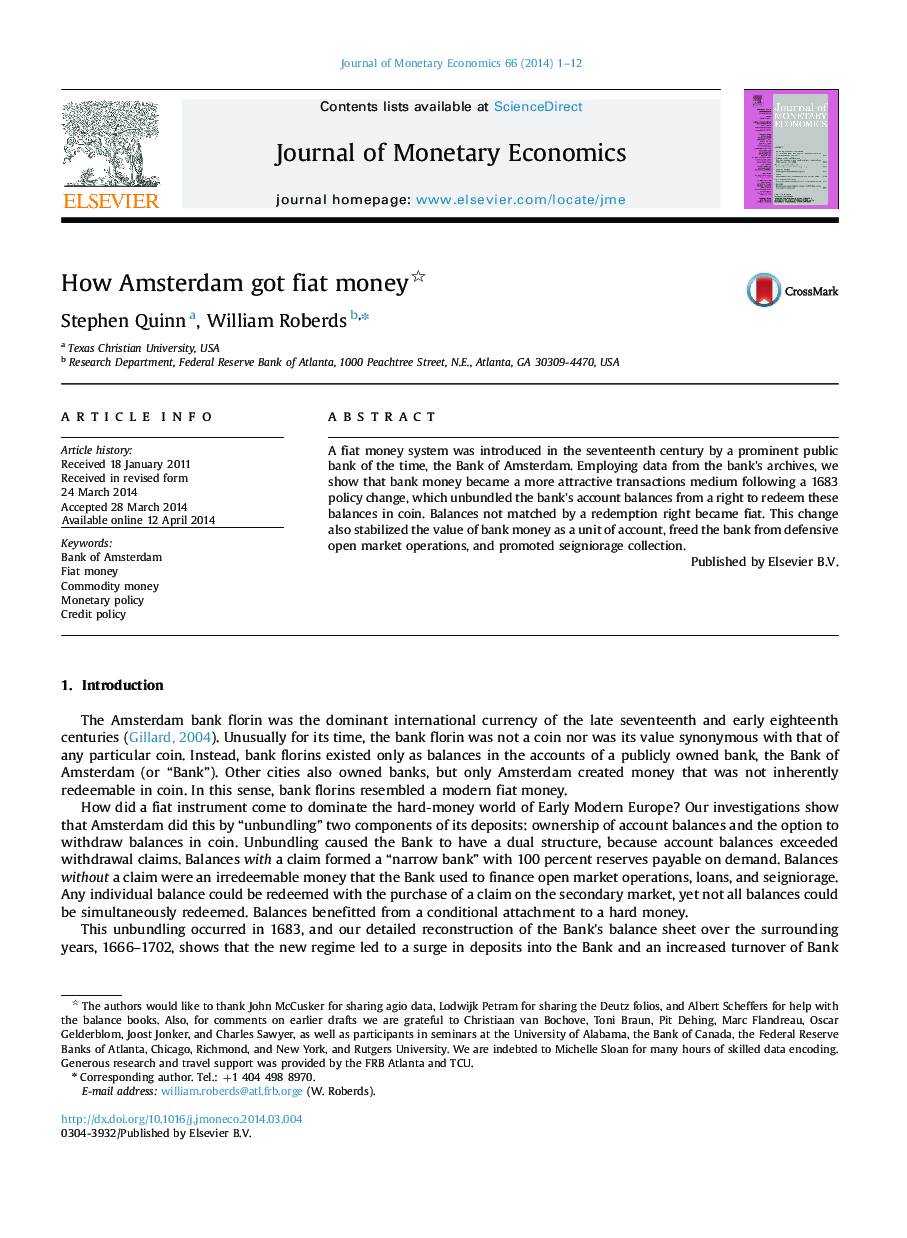| Article ID | Journal | Published Year | Pages | File Type |
|---|---|---|---|---|
| 967111 | Journal of Monetary Economics | 2014 | 12 Pages |
Abstract
A fiat money system was introduced in the seventeenth century by a prominent public bank of the time, the Bank of Amsterdam. Employing data from the bank׳s archives, we show that bank money became a more attractive transactions medium following a 1683 policy change, which unbundled the bank׳s account balances from a right to redeem these balances in coin. Balances not matched by a redemption right became fiat. This change also stabilized the value of bank money as a unit of account, freed the bank from defensive open market operations, and promoted seigniorage collection.
Related Topics
Social Sciences and Humanities
Economics, Econometrics and Finance
Economics and Econometrics
Authors
Stephen Quinn, William Roberds,
